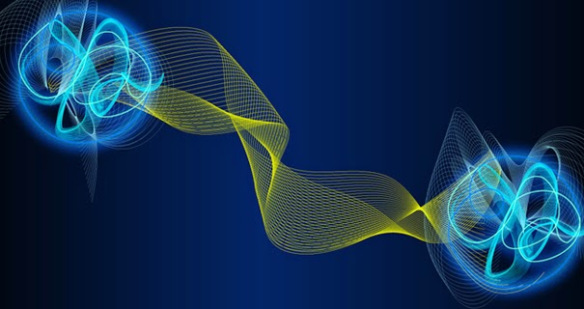An international research team has discovered that photons can compensate for electrostatic repulsion between negatively charged particles.
Photons (the particles that make up light) can be used to hold together negatively charged particles. This is the discovery made by an international research team. The Materials Workshop Institute (Cnr-Iom) in Trieste, the National Institute of Optics (Cnr-Ino) in Trento and the Institute of Photonics and Nanotechnology (Cnr-Ifn) participated in the study. The project is led by two young Italian scientists. Giorgio Biasol led the group that dealt with the growth of quantum well structures with the MBE (Molecular Beam Epitaxy) technique while Iacopo Carusotto was responsible for the design of the experiment. The results were published in the authoritative journal Nature Physics. Commonly, particles with negative charges are repelled (while those with positive and negative charges are attracted). Researchers have instead discovered that photons can be used as a kind of “super glue” capable of compensating for electrostatic repulsion and holding negatively charged particles together.
Read also → Nobel Prize 2020 in Chemistry to the developers of the genetic editing method
A “super glue” of photons for particles with negative charges
Researchers have identified a new form of matter called Photon Bound Exciton. “This experiment – explained the coordinator Giorgio Biasol in an interview – confirmed what was expected in the light of the photoelectric effect, whose discovery won Einstein the Nobel Prize in 1921, and substantially demonstrates the possibility of designing new artificial atoms, considerably expanding the list of materials available for scientific and technological applications, and in particular photonic devices. The possibility of using light as a sort of subatomic hinge, able to bind electrons together to create new objects similar to atoms”. But how did the discovery happen? “We first synthesised this nanometric device,” Biasol explains. “Then we enclosed it between two golden mirrors, which trapped the photons and focused the light energy near the electrons, greatly increasing the interaction between light and matter. It has therefore been observed that one electron remains trapped in the well, bound to the other negatively charged electrons in a new electronic configuration stabilised by the photon”.
You might also be interested in → Maxwell’s Daemons: the shooter videogame that “teaches” physics and chemistry
